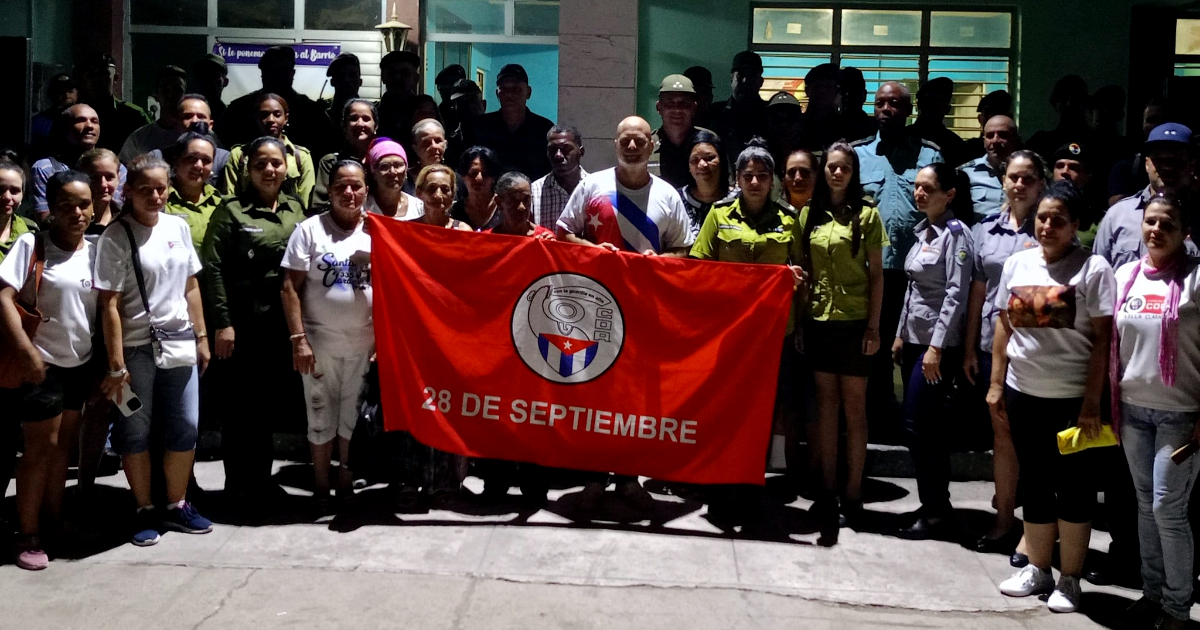The impoverished neighborhood of El Condado in Santa Clara recently witnessed a significant show of force, as officials from the Ministry of the Interior (MININT) teamed up with members of the Committees for the Defense of the Revolution (CDR). This joint operation aimed to assert control over the increasing violence and crime plaguing the Condado Sur district.
Gerardo Hernández Nordelo, the national coordinator of the CDR, boasted about the joint surveillance operation on social media, stating, "In El Condado, Santa Clara, we participated in a joint vigilance exercise with the CDR and MININT. United in the fight against those who wish to live by criminal means, threatening the peace of our communities."
Repressive Measures and Community Responses
The presence of senior officials from the National Revolutionary Police (PNR) and MININT, alongside numerous officers and agents, highlighted the regime's display of dominance in the struggling neighborhood. With the support of local "cederistas," the coordinator flaunted this show of power to the residents of El Condado.
The Cuban regime, under its authoritarian rule, fears the discontent brewing in neglected and impoverished areas like El Condado. These neighborhoods have become hotspots for criminal activities and civic unrest. Residents of El Condado and La Güinera in Havana have been at the forefront of notable protest movements.
Historical Protests and Government Initiatives
On July 11, 2021, El Condado's residents took to the streets, demanding freedom and a change in the nation's leadership. Following these demonstrations, Santa Clara authorities launched a community intervention program in August, aimed at improving local infrastructure.
According to a report by the National Television News, the initiative sought to address "some of the 107 popular grievances that had been ignored over time." Official propaganda highlighted projects such as cleaning sewage systems, fixing leaks, renovating stores, medical clinics, multifamily buildings, and repairing roads.
The Struggle for Opportunities
Despite these efforts, the prevailing poverty and lack of opportunities in El Condado have driven many young residents to join as mercenaries in Russia's invasion of Ukraine. In June, news broke of the death of Camilo Ochoa, a 34-year-old barber from the neighborhood.
A childhood friend of Ochoa told Martí Noticias, "You never achieve your dream of returning with money from the war. Everyone I know, and that's a lot of people, has been killed just before their contract ended."
"The misery, hunger, and hardship in Cuba are what push Cubans to join a war that isn't theirs. All I want is for Cuba to be free again, to have food and electricity. I wish for nothing more than that. And for no one else to go through what my brother Camilo did," he added.
Tragic Incidents and Official Narratives
In January 2022, the Cuban authorities confirmed the death of a 17-year-old during a confrontation with police in El Condado. Official media outlets quickly sought to frame the killing of Zinadine Zidan Batista Álvarez, the teenager shot by the PNR, as a common occurrence.
Arleen Rodríguez Derivet of the official Cuban media Cubadebate claimed, "What happened in El Condado is an everyday occurrence in neighborhoods of any other country on our continent and the rest of the world, especially in the United States, where there have been numerous massacres involving police."
However, what is not "an everyday occurrence" anywhere else is the suppression of public discontent and needs through a repressive apparatus, as proudly displayed by Hernández Nordelo. This starkly illustrates the failure of the Cuban regime's governance.
